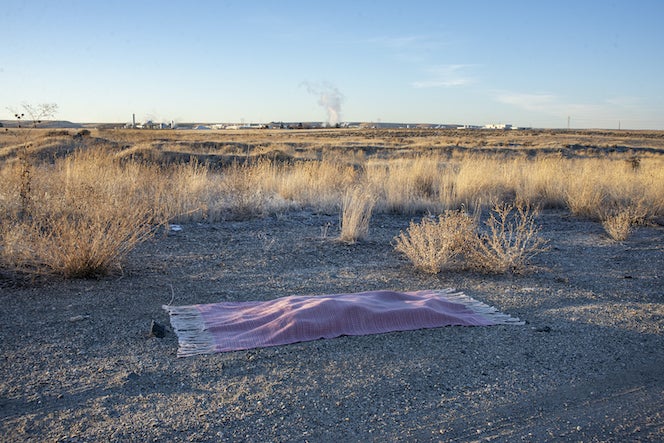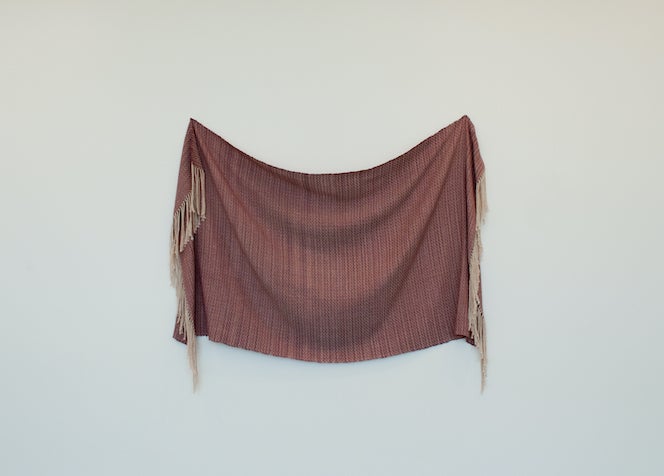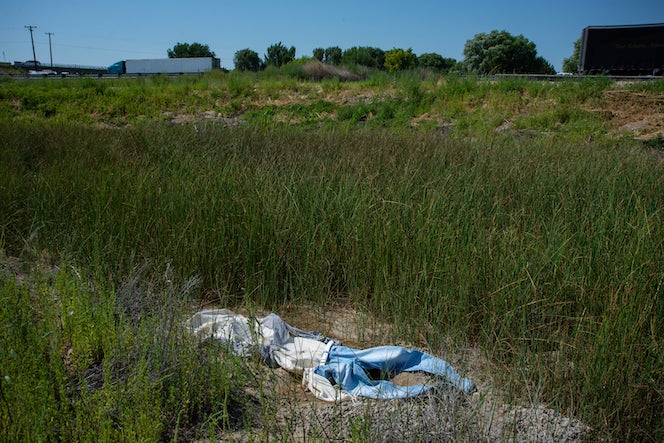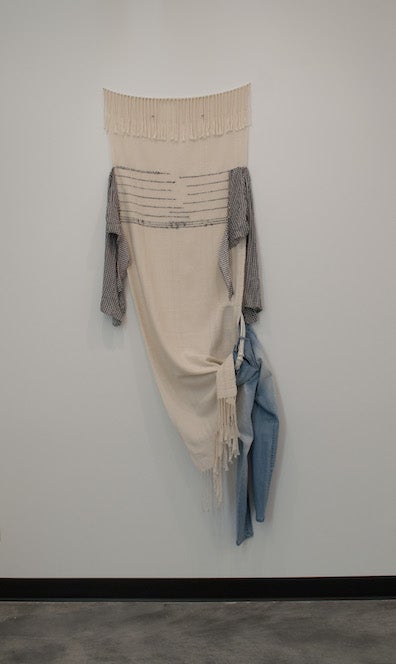
An exhibition at the KCKCC Gallery at Kansas City Kansas Community College includes two works by Lily Lee. The pieces are part of Lee’s ongoing Great Basin Murders series. In this series, Lee uses numerical and other data from murder scenes, including GPS coordinates, victims’ measurements, estimated ages and more, to generate weaving patterns. From these patterns, Lee creates memorial shrouds specific to each victim. Recently, Lee partnered with photographer and Boise State graduate Carrie Quinney to photograph Lee’s shrouds placed at crime scenes, or in landscapes reminiscent of the places where victims lay.

The exhibition, BECOMING: Womyn Bodies of Trauma, Displacement and Dissidence, will continue through March 12. Karlota I. Contreras-Koterba, director of the Slocumb Galleries at East Tennessee State University, curated the exhibition.


Jose Ardivilla, a Fulbright scholar at Texas Tech University wrote the essay, Monuments to Trauma, for the exhibition catalogue. About Lee’s work Ardvilla wrote: “Trauma is a reshaping. Photography as documentation of violence is also used by Lily Lee, but for her it is a double reconstruction. Lee reconstructs scenes of crimes against artists with fiber installation. To compound that reconstruction, she takes photos of her reclaiming of such spaces as an indictment against the many unresolved cases at these Midwest water basins. These photographs are a reshaping of the last moments of these artists which goes beyond a mere capturing by police photography. These are hauntings of a blighted landscape that is watered by blood of artists.”